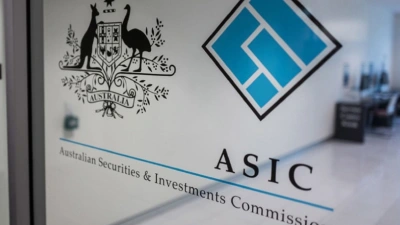Education: now the hard work begins
The deadline to comply with the minimum standards of Policy Statement (PS) 146 has come and gone, and from all accounts the industry has done well with most planners proving to the Australian Security and Investments Commission (ASIC) that they have got what it takes.
But is that it until the next mad rush to prove you are good enough to do what you have been doing for the last few years? Apparently not, according to those people who have enjoyed some boom times in recent months, the financial services educators.
Investment Training College marketing manager Sue Hamparsum says two issues still facing the industry are getting those who are not yet PS 146 compliant up to speed, and then ensuring they remain within the guidelines set under the regulations.
“Despite the huge amount of work done so far, there are still a lot of people out there who are not compliant. The rush to meet the June deadline has passed and core advisory and planning people have been through the system, but for many others there is still a need to meet basic competencies,” Hamparsum says.
According to Hamparsum, many of these people are now working under the supervision of someone who is already PS 146 compliant or are not working in direct advisory roles until they can prove their abilities. This is because regulations state that any training not begun before the June deadline automatically excludes a planner from giving advice until they have proved they are competent to do so.
She says for those who have been through the PS 146 process, staying compliant and within competencies is the next task.
Adam Davis, managing director of Tribeca, parent group to education provider IntegraTec, agrees that continuing education is the next hurdle. In the past, industry associations imposed continuing education requirements on its members, but now these have been enshrined in regulation and carry even more weight.
“This means the licensee must keep training planners and advisers in the areas they work in, but also track their performance against the training they receive. This means one or two-day conferences and training days are not sufficient alone for ongoing education,” Davis says.
In particular, Davis is referring to the requirements of licensees, in a planner’s case their dealer group, to maintain a register of training and competencies.
This register must cover all employees covered by PS 146 and list the areas they work in, the initial training they have received and any ongoing training and education to ensure they remain competent to work within that area.
It also means that both planners and dealer groups now have a part to play in ensuring that they are educated and competent. But both Davis and Hamparsum say the development and maintenance of further skills and compliance tools like the training register are a good step, not just for the providers of education services but also for those offering advice and their clients.
“This has been a pain and an expense for the industry, but it does lead to better staff and service and is only the beginning. It will lead to a time where everyone will need to have a degree qualification and groups who see that as a positive will do better,” Hamparsum says.
But given that this is the way ahead for those planners and advisers who reached ASIC’s June 30 deadline, what is the road ahead for those who did not?
Before the deadline ASIC made it very clear that the cut-off date was absolute and that all those planners who were not compliant would be unable to practice. Their licensees would be in breach of their obligations if they failed to adequately train authorised representatives by the due date.
Despite these moves, ASIC has still given some relief to those who may not have fared as well as hoped in their bid to become PS 146 compliant.
In statements released up to and during the compliance period ASIC said that a failure by an authorised representative to reach the pass mark required in exams would not be grounds for their licensee to be regarded as breaching its training obligations.
Rather ASIC has said it would allow a 10 per cent tolerance, so in the event that a course has a pass mark of 75 out of 100, a mark of 68 would be within the 10 per cent tolerance and therefore allow the planner to continue offering advice.
But ASIC is by no means giving any free kicks, going on further to state that the pass mark must be above 50 per cent to begin with and that all those who take advantage of the 10 per cent tolerance have until June 30, 2003, to fully comply with PS 146. These people, however, can do this by re-sitting an exam or opting for individual assessment.
ASIC has also indicated it understands that not everyone would have been able to be trained and examined by June 30 this year and has made provision for those whose education and assessment straddled that date.
It has done this by stating that until an adviser is PS 146 compliant they can only conduct meetings with clients with another fully compliant person or that any written plans or advice are signed off by a person fully compliant under PS 146.
But as Davis and Hamparsum say, much of the onus is with the licensee, in many cases the dealer group, to ensure advisers and planners are compliant.
In the above cases it is the licensee who ASIC will consider in breach of their legal obligations if advisers are not trained and compliant, both now and moving ahead.
But what will ASIC’s attitude be in the future regarding failures to ensure planners and advisers, as well as other staff within a planning practice, are compliant with the new guidelines?
So far it has been caught up in its efforts to hand out new Australian Financial Services Licences (AFSL) and national director Ian Johnston has said that ASIC will take a reasonable approach, especially if any omissions are the result of oversights or confusion and systems are in place to ensure long-term compliance.
The regulator also says that none of what the market has gone through, or is set to go through in the future, is either new or unknown and experienced industry players should have set up systems to deal with these issues.
In fact it says that where licensees show disregard for compliance with PS 146, or do not have adequate systems for monitoring compliance by advisers, ASIC will establish the extent of any breaches through targeted surveillance activities, without notice to the licensee.
Where the breach is sufficiently serious, ASIC will use such enforcement powers (including administrative and civil remedies) as are appropriate.
Davis says ASIC has been given $90 million for PS 146 enforcement and has already outlined the obligations of all players. Given that the regulator is not averse to closing down individual planners as well as entire dealer groups, these are not idle threats from the industry watchdog.
Recommended for you
AMP has cut its executive remuneration following shareholder pushback which sees chief executive Alexis George’s maximum-possible remuneration reduced by almost $1 million.
CoreData research has highlighted Australian financial advice practices are expanding beyond traditional financial advice and reinforcing the power of a professional network to build their service offering.
ASIC has suspended the Australian Financial Services Licence of a Melbourne-based financial advice firm.
South Australian financial advice firm Calder Wealth Management has announced a strategic partnership with a risk advice firm.















